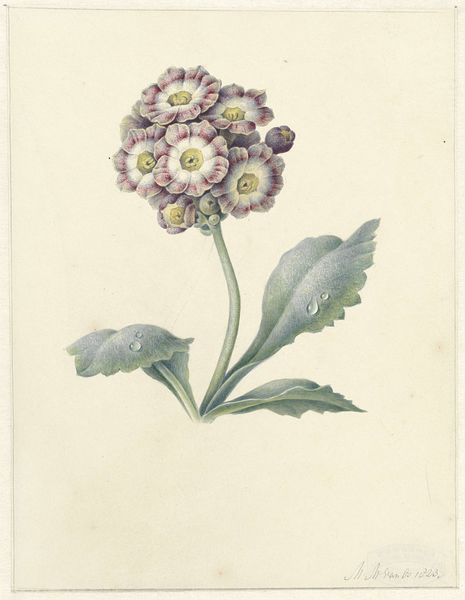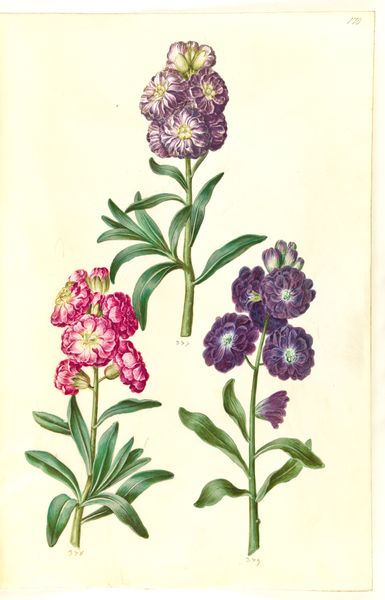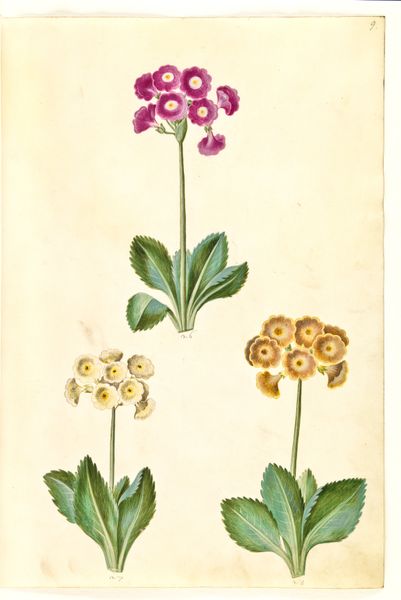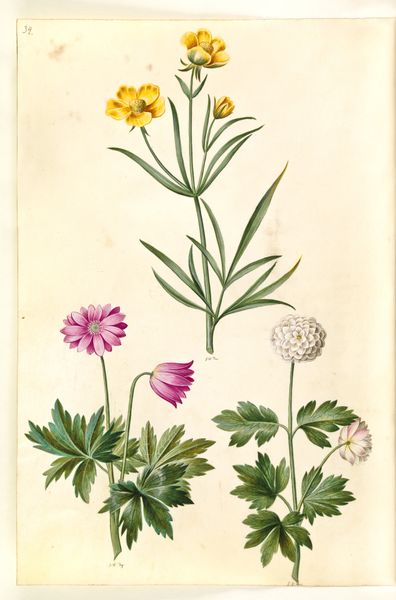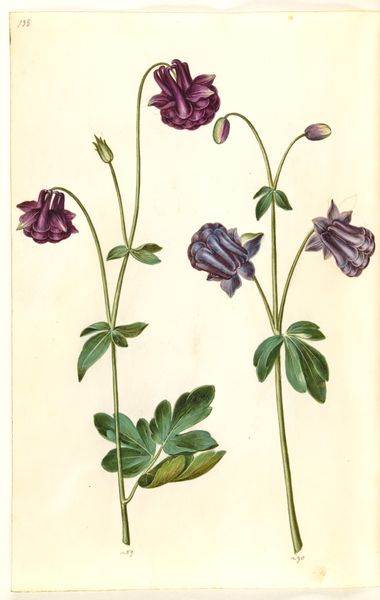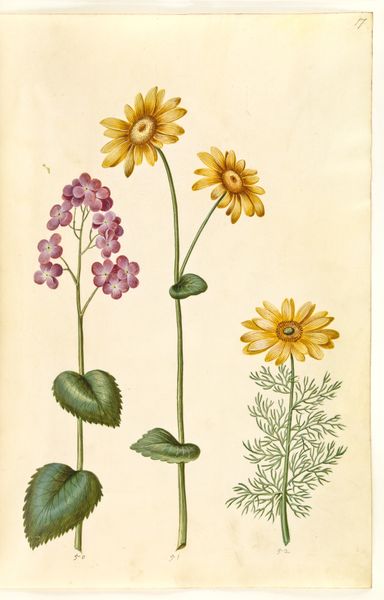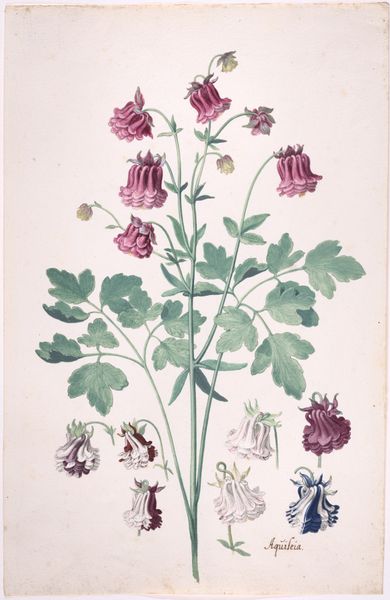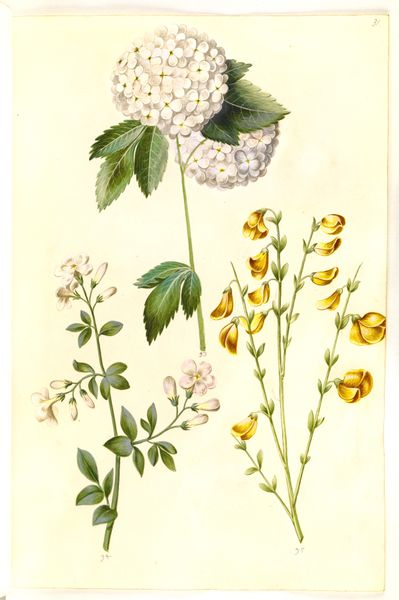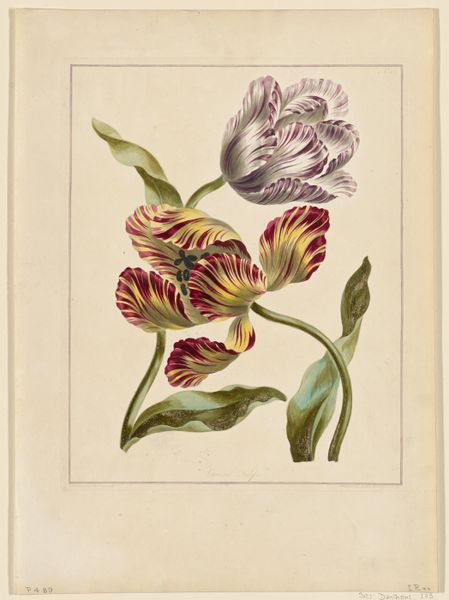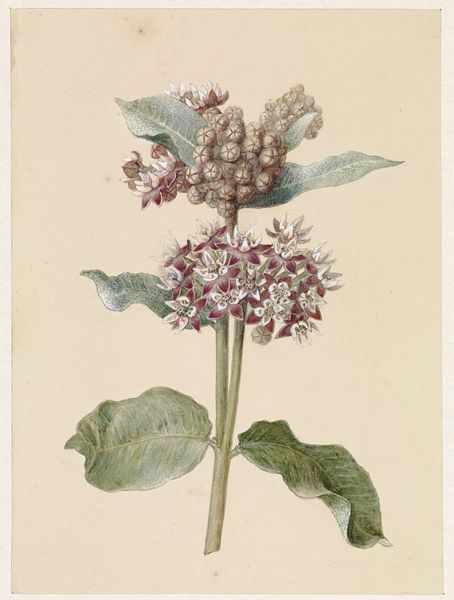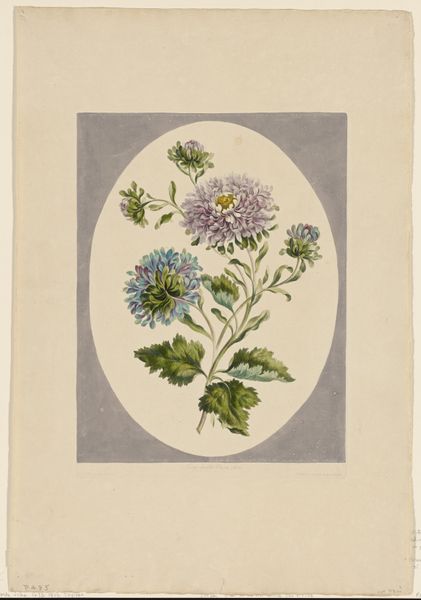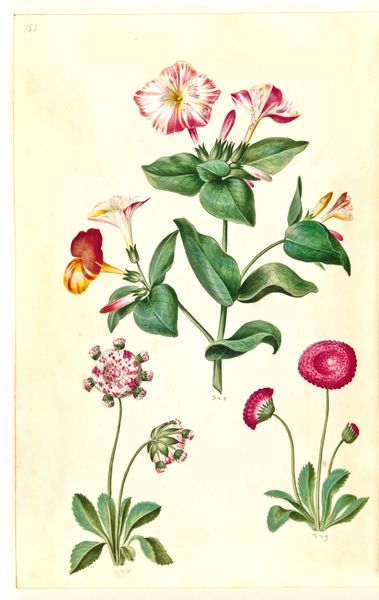
print, watercolor
# print
#
landscape
#
watercolor
#
romanticism
#
watercolour illustration
#
botanical art
Dimensions: 10 3/4 x 8 1/4 in. (27.31 x 20.96 cm) (plate)
Copyright: Public Domain
Curator: Here we have a beautiful watercolor print titled "Primula auricula," or "Primroses," created in 1827, location Minneapolis Institute of Art. Editor: Immediately striking. I notice the deep jewel tones against the stark white background and the scientific rendering of the individual petals. It feels precise, almost like a record. Curator: Precision is key, wouldn't you agree? Consider the printmaking process, especially for botanical illustrations. Accuracy was paramount; these images were often used for scientific study. The material aspect of reproduction allowed knowledge to be disseminated far beyond the original watercolor. Think about the skilled labor involved in crafting printing plates back then and hand-colouring each print. Editor: Absolutely. And yet, the auricula flower itself has a very interesting symbolic history. These exotic primroses were prized by working-class people in the 18th and 19th centuries; a flower steeped in coded, subversive, class related meaning, I would say. Each bloom held an emblematic significance that resonated with notions of community, pride, and cultural identity of specific gardeners from those eras. Curator: Very intriguing, a counterpoint to my thought. Were there any material implications for amateur or professional gardeners to access specific species of these unique, delicate primroses? The cost alone would certainly be a barrier for lower-class members, unless they knew where to harvest in situ. Editor: Exactly! Possession and careful placement would speak to certain class tensions. Note the yellow butterfly delicately perched on one leaf – its color perfectly echoing the auricula’s heart, subtly symbolic of the transformative potential within the natural world, perhaps? Curator: Yes, but how accessible and practical was this romanticization or "transformation," or the butterfly life-cycle, to different classes and genders involved with botany in this timeframe? Editor: Well, looking at the botanical illustrations and all the coded messages through these Auricula "theatres," I would be more prone to say there was also a more idealized projection or longing happening on a grand scale at this moment. Curator: Thank you, those layers certainly deepen the appreciation. I’ll definitely keep these floral subcultures and botanical considerations in mind next time. Editor: Likewise! The interplay of image and symbol makes the artist's considerations and process fascinating to me.
Comments
minneapolisinstituteofart almost 2 years ago
⋮
Botanical illustrators working in the fifteenth and sixteenth centuries devoted themselves to the medicinal qualities of plants and sought to render plant structure and function as precisely as they could. Later, European explorers brought specimens back from exotic locales, and artists carefully reproduced them for an audience fascinated by new discoveries. By the eighteenth and nineteenth centuries, artists had shifted their emphasis from scientific illustration to the innate beauty of the plant or flower. The Minneapolis Institute of Arts is fortunate to possess an impressive collection of more than 2,000 botanical prints and drawings.
Join the conversation
Join millions of artists and users on Artera today and experience the ultimate creative platform.
